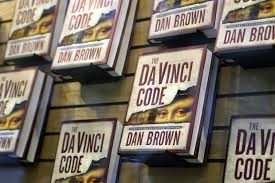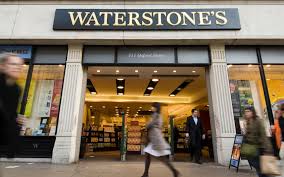
Yeah, I’m still here. It’s just that I haven’t been, well, here.
Living in The Gambia, West Africa, has its compensations, of course. and my worst nightmare would be having to leave, but life is never a breeze here. At last, not when it comes to trying to keeping on top of the writing workload.
Back when I actually lived in the UK I imagined being endlessly productive once I set up here, with no commuting to and from the coffee bar every day, no distracting TV and newspapers, etc.
If only. Trying to straddle the First and Third Worlds is like swimming in treacle.And for some reason WordPress seems to suffer from the heat and sand while Facebook doesn’t, which means while I’ve managed to remain active in the International Indie Author Facebook Group, keeping up with the posts on the blog has become a casualty of real life.
So for the next week or so I’ll be re-running some of the posts that have already appeared in the IIA Facebook Group, along with new posts that will with luck go out the same day on both sites.
And I’ll kick off today with this IIA Facebook Group post from a day or so ago.
Dan Brown Shows Us How Its Done – Age-Group Verticals.
I’ve long been an advocate of exploring every possible vertical for one’s titles.
We’ve written an ebook?
A print version should be the standard next step, not a token afterthought if we can be bothered.And not just a print version. We can offer print versions in variant-sized paperback formats to suit reader needs. We can offer large-print versions. We can offer hardcover versions, special editions, numbered and signed editions…
With Amazon’s ACX helping us produce audiobooks and Babelcube helping us get translations with no upfront costs there’s really no excuse for us not to be adding these verticals to our portfolio even if we have severely limited budgets.
(BTW I deliberately use the word portfolio rather than catalogue because these are one hundred percent investments.)
As per previous posts on this subject, we need to think of ourselves as content-providers, not just book authors, and definitely not just ebook authors.
There are so many possible verticals we can breed from one single ebook if we would but set aside the time, energy and token expense to look at the bigger opportunities unfolding.
As I’ve explored in many previous posts, we don’t need to be screenwriters to see our books turned into film or TV, we don’t need to be artists to produce colouring books (adult and child alike), illustrated books or Manga versions of our titles, we don’t need to…
Just as we don’t need to be voice-artists or fluent in foreign languages to have audio-books or translations.
We simply find a third party, paying or partnering for the service, to do it for us.
But there are some verticals we can do very easily ourselves. Age-group verticals and easy-read verticals.
By way of example, not self-promo, I’ve been exploring both with my Sherlock For Kids adaptations of the classic Sherlock Holmes short stories, and my easy-read Easy-English versions of those stories. I’ll be producing illustrated versions and adult and child colouring book versions of these titles later this year too. Audio-books are under way and I already have some in a dozen or so languages.
Let’s take easy reads first.
We easily forget, as authors who have been devouring books since infancy, that not everyone is lucky enough to have had an education or up-bringing that encouraged them to read.
My Easy-English titles are beginning to find a receptive audience among late-to-literacy adults, reluctant teen readers, and ESL students who have some grasp of English but aren’t confident enough reading to tackle a full-length book written for native-speakers. I’ll be working on dedicated ESL versions later this year.
And sometimes adult titles will work very well as teen or even children’s reads.
Most of us will, as I did, have discovered Dickens, Austen and the other greats in abridged children’s versions long before we tackled the originals.
Some adult titles – erotica, for example – might not easily be adapted to YA or children’s versions, but most books will, and it’s a niche well worth looking at.
Later this year Dan Brown will trigger a goldrush for this sector as he releases a YA version of The DaVinci Code, to coincide with the Inferno film.
Save the scathing criticisms of Dan Brown’s literary skills for elsewhere. He makes no claim to be Shakespeare. Here let’s just remember The DaVinci Code has already sold 82 million copies, and the YA version is going to open up that classic to millions upon millions of new readers far too young to remember the phenomenal success of the original, and many of whom will be to young to tackle the original.
YA and children’s versions of our titles are just one more way we can leverage a single book and turn it into multiple new income streams.
And I do mean multiple. Because once we have abridged and adapted our adult title to the YA and children’s ebook market (and why not go the whole hog and do both separately?) we then have the opportunity to produce print versions, audio versions, illustrated versions, colouring book versions, TV and film versions, musicals, school plays and a host of other possibilities it would take me all day to list.
Don’t be an ebook author. Be a three-dimensional content creator.
Take your horizontal ebook, explore and exploit every vertical you can, and then look at your diagonals (series, spin-offs, etc) and explore all those verticals too.
I’m a 3-D content-creator that happens to start with ebooks.
How about you?
◊ ◊ ◊
This post first appeared in the International Indie Author Facebook Group on 18 May 2016.



